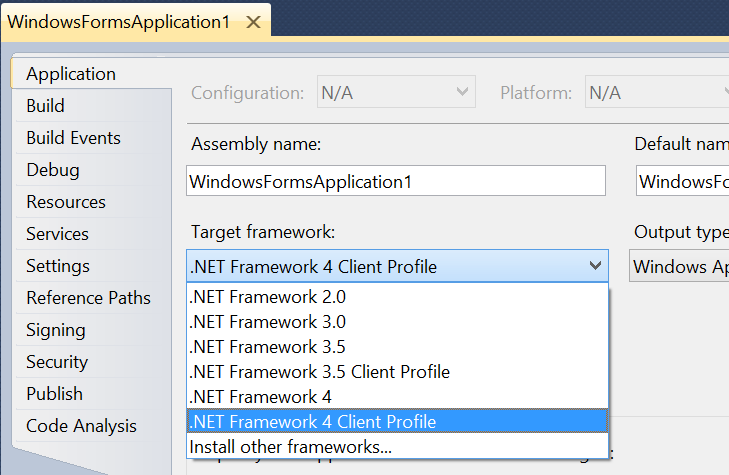Since Visual Studio 2008, a project can be built against different .NET Framework targets, versions and profiles. When you create a Visual Studio project, you get the first chance of selecting the target .NET Framework in the New Project dialog:
If you change your mind later, you can go to the project properties dialog and change the target .NET Framework:
This capability is known as framework multi-targetting and in recent versions of Visual Studio has exploded to allow tons of different combinations of .NET Framework versions and profiles (.Net Framework, Silverlight, Windows Phone, XBox, .NET Microframework, .NET Portable, etc. You can read more in this post of MVP fellow Stephen Cleary: Framework Profiles in .NET.
Now, we will get to the code:
A combination of .NET Framework name, version and profile is known as .Net Framework “moniker”, and it has a display name (friendly name).
You can get the .Net Framework moniker that a project is targeting using automation (EnvDTE.Project.Properties.Item(“TargetFrameworkMoniker”).Value) or using the native services of Visual Studio (IVsHierarchy.GetProperty method with the __VSHPROPID4.VSHPROPID_TargetFrameworkMoniker property)
But more difficult is to know which are the available .NET Framework monikers, the display name of a moniker, the available assemblies for that moniker, etc. The interface to use is IVsFrameworkMultiTargeting and this new article of mine shows some sample code:
HOWTO: Get supported frameworks and profiles of a Visual Studio version from a package
The interface has more methods, so check the documentation.

